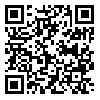Volume 27, Issue 1 (2025)
JAST 2025, 27(1): 81-95 |
Back to browse issues page
Download citation:
BibTeX | RIS | EndNote | Medlars | ProCite | Reference Manager | RefWorks
Send citation to:



BibTeX | RIS | EndNote | Medlars | ProCite | Reference Manager | RefWorks
Send citation to:
Bagheri A, Emami N. Famers’ Intention to Use Precision Farming Technologies, Application of the Extended Technology Acceptance Model:
A Case in Ardabil Province. JAST 2025; 27 (1) :81-95
URL: http://jast.modares.ac.ir/article-23-70488-en.html
URL: http://jast.modares.ac.ir/article-23-70488-en.html
1- Department of Water Engineering and Agricultural Management, Faculty of Agriculture and Natural Resources, University of Mohaghegh Ardabili, Ardabil, Islamic Republic of Iran. , a_bagheri@uma.ac.ir
2- Department of Water Engineering and Agricultural Management, Faculty of Agriculture and Natural Resources, University of Mohaghegh Ardabili, Ardabil, Islamic Republic of Iran.
2- Department of Water Engineering and Agricultural Management, Faculty of Agriculture and Natural Resources, University of Mohaghegh Ardabili, Ardabil, Islamic Republic of Iran.
Abstract: (1547 Views)
Precision agriculture promises to enhance economic benefits while maintaining more environmentally friendly farming practices. Despite the efforts to facilitate the adoption of Precision Farming Technologies (PFTs), the adoption remains low. Using an extended version of the Technology Acceptance Model (TAM) with two external constructs of Personal Innovativeness (PI) and Compatibility (COM), this study investigated the pioneer farmers’ Intention (INT) to use PFTs. In this survey research, a questionnaire was used for data collection from a sample of 295 farmers (N= 295). The results showed that the extended model could promote the explanatory power of the TAM and explain 72.6% of the variation in farmers’ INT to use PFTs. Respondents were relatively innovative (Mean= 3.25), had positive Attitudes (ATT) (Mean= 3.53), and had relatively positive INT to use PFTs (Mean= 3.24). In contrast, they perceived that PFTs were challenging to use (Mean= 2.7), relatively useful (mean=2.93), and lowly compatible with their small-scale farming systems (Mean= 2.66). COM was the most critical factor affecting INT, followed by Perceived Ease of Use (PEU), Perceived Usefulness (PU), PI, and ATT. At the same time, PEU had no significant effect on ATT, indicating that when farmers assess PFTs, ease of use is not a problem, but PEU is essential when they intend to use these technologies. Considering the high initial investment requirement and knowledge-intensive nature of PFTs, policy, and educational interventions are required to facilitate farmers' utilization of these technologies. To achieve the best results, one should begin with pioneer farmers.
Keywords: Personal innovativeness, Pioneer farmers, Precision agriculture, Technology acceptance model.
Article Type: Original Research |
Subject:
Agricultural Extension and Education
Received: 2023/07/13 | Accepted: 2024/01/2 | Published: 2024/03/31
Received: 2023/07/13 | Accepted: 2024/01/2 | Published: 2024/03/31
Send email to the article author
| Rights and permissions | |
 |
This work is licensed under a Creative Commons Attribution-NonCommercial 4.0 International License. |







